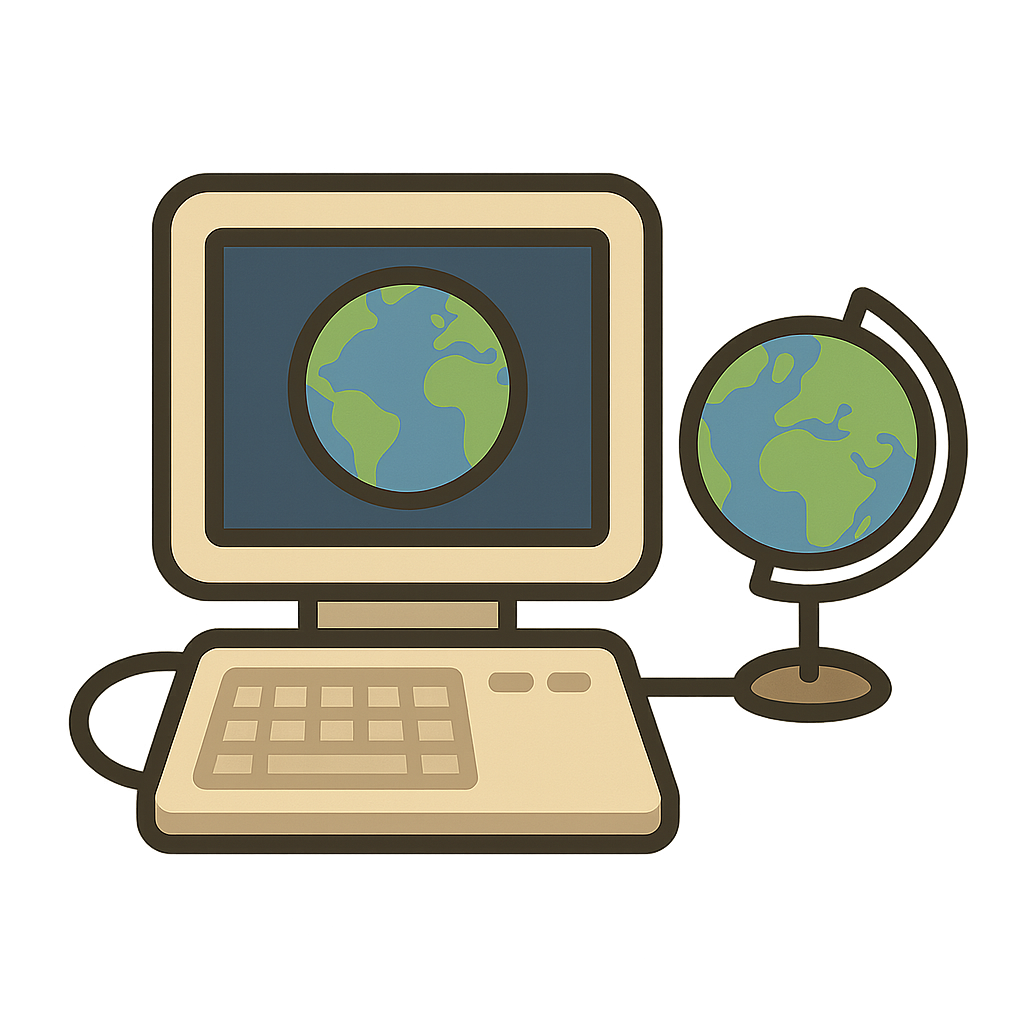Weaving the World Wide Web
My name is Tim Berners-Lee, and my story begins not with a flash of lightning, but with a feeling of frustration. The year was 1989, and I was working as a software engineer at CERN, the European Organization for Nuclear Research, nestled near the beautiful Alps in Switzerland. CERN was an incredible place, a buzzing hive of brilliant minds from all over the globe, all working together to unlock the secrets of the universe. But we had a very down-to-earth problem. Thousands of scientists were conducting research, and all their data, notes, and ideas were stored on different computers. These computers were like people who all spoke different languages and refused to learn a new one. To share information, you had to physically find the right computer, learn its unique system, and hope you could transfer the file you needed. It was a digital mess. I imagined all this valuable knowledge trapped in separate electronic boxes, unable to connect. I kept thinking, what if there was a way to link it all together? I dreamed of a single, universal, magical information space where any piece of information could be linked to any other. A place where you could jump from one idea to the next with a simple click, just like our minds make connections between thoughts. I called this concept 'hypertext,' and it became an obsession. I knew there had to be a better way to share what we knew.
That dream of a connected information space wouldn't let me go. The internet—the physical network of cables and computers connecting the globe—already existed. But it was like having a massive system of roads with no addresses, no road signs, and no cars. My job was to invent all three. The first invention I called HTML, or HyperText Markup Language. You can think of it as the set of instructions for building a house. It told a computer how to display text, where to place an image, and most importantly, how to create a special, clickable link—a hyperlink. The second invention was the URL, or Uniform Resource Locator. This was the unique address for every single page or picture, like a specific postal address for every single house in the world. With a URL, you could find any piece of information anywhere. The final piece of the puzzle was HTTP, or HyperText Transfer Protocol. This was the special language, the messenger service, that allowed a computer to ask another computer for a webpage and have it delivered. With these three tools, the dream could become a reality. I got a sleek, black NeXT computer, and on it, I began to build. I wrote the code for the very first web server—the computer that would hold the information—and the first web browser, which I called WorldWideWeb, the program that would display it. I worked for months, piecing it all together. To make sure no one accidentally shut down my precious server, I taped a note to it written in red ink: 'This machine is a server. DO NOT POWER IT DOWN!!'. Then, in December of 1990, the moment came. I published the very first website. It was a simple page explaining the project, but when I clicked on that first hyperlink and a new page instantly appeared, it felt like pure magic. The first strand of a global web had been woven.
As the web began to grow within CERN, I faced a monumental decision. Some people suggested I should patent my inventions—HTML, URLs, and HTTP. If I had, I could have become incredibly wealthy by charging a fee every time someone used them. But I knew in my heart that would have been a terrible mistake. My dream was of a universal space for everyone. If it was locked behind a paywall or controlled by one company, it would never truly connect the world. It would become just another closed-off system, the very thing I was trying to fix. I believed this invention was too important to be owned. It needed to be a gift to the world, a public resource like the air we breathe or the water we drink. So, I advocated for it to be made freely available. On April 30, 1993, CERN officially agreed and put the World Wide Web software into the public domain. That single act changed everything. It was like giving everyone on Earth a key to the same library and a toolkit to build their own wings. Innovators, artists, entrepreneurs, and ordinary people began to build upon it, creating millions of websites, services, and new ways to connect. The web exploded from a small academic project into a global phenomenon that has reshaped humanity. My hope has always been that this tool would be used for good—to empower people, to spread knowledge, and to foster understanding. The web is what we, all of us, make it. I encourage you to use it to be creative, to stay curious, and to build a kinder, more connected world.
Reading Comprehension Questions
Click to see answer
